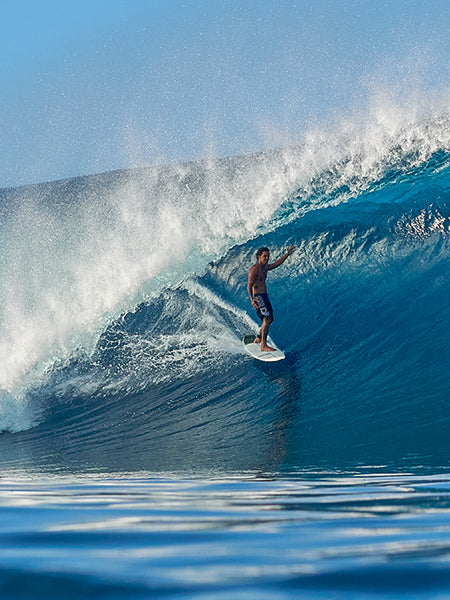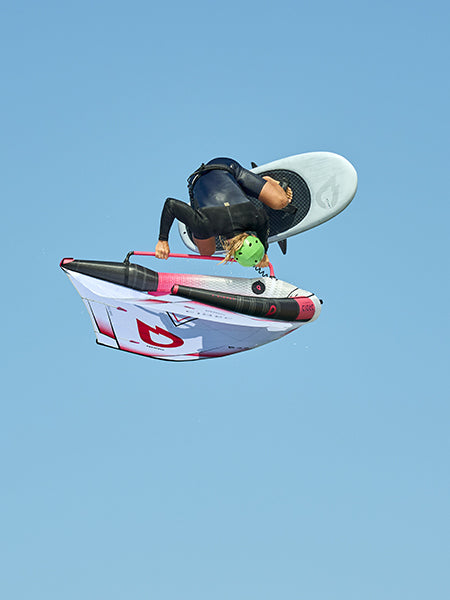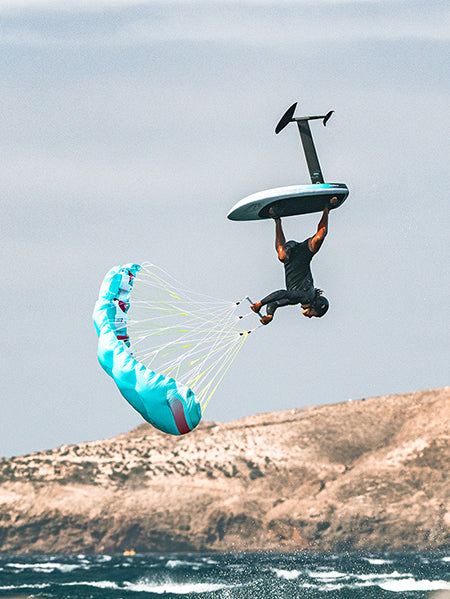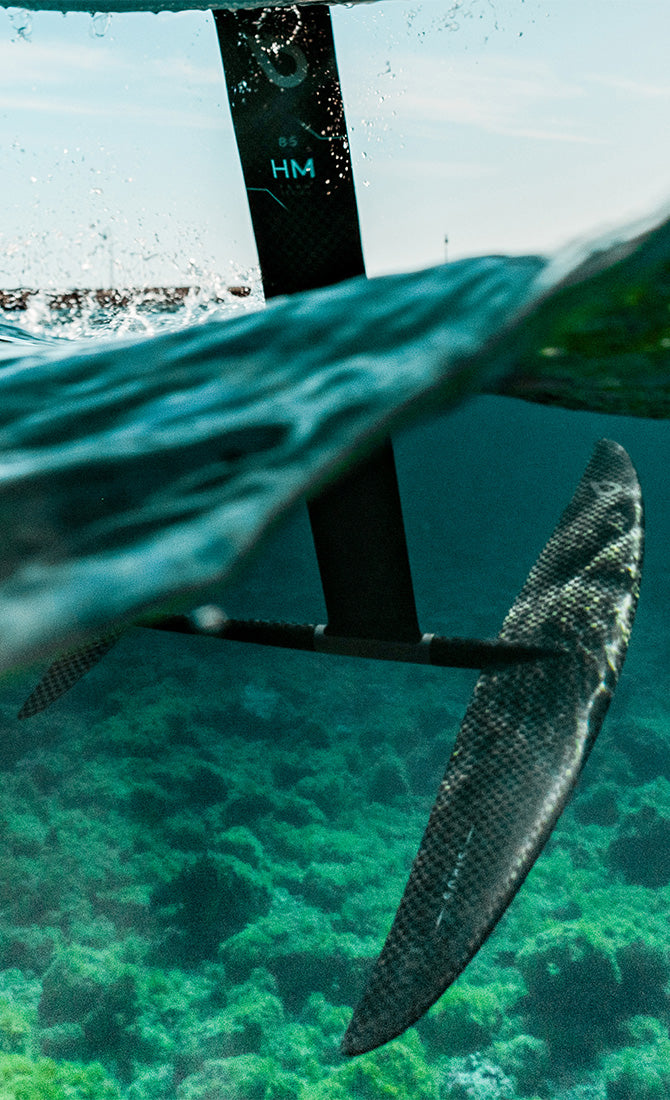How to choose the right spot for surf foiling?
With the surf foil the potential for good spots has widened. Soft, knee-high waves that are struggling to break are now considered good conditions! Likewise, the fallback spots change rank. The right spot for foil surfing combines several parameters.

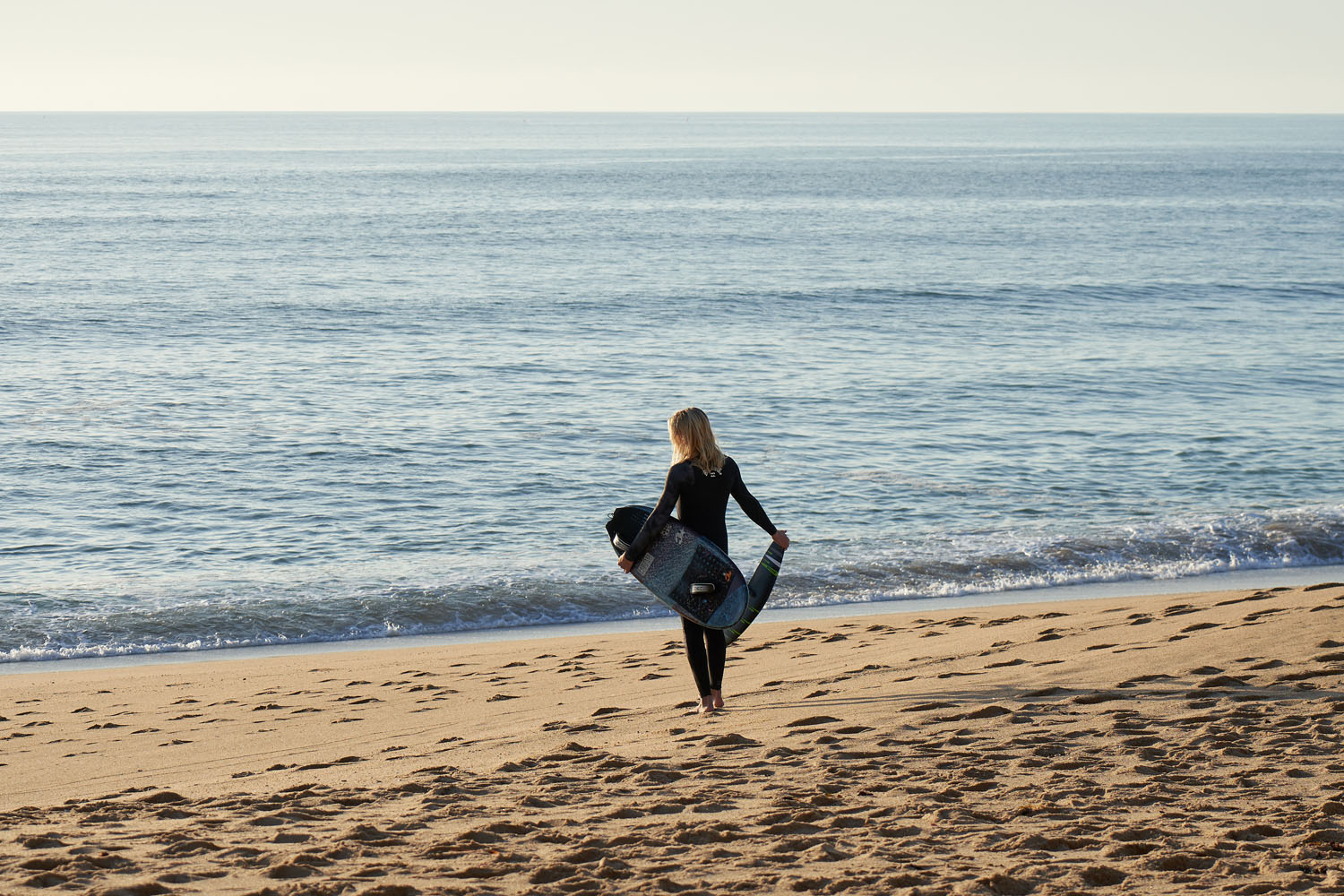
Enough water
Hitting the bottom can cause great damage to your foil. It is absolutely necessary to foresee a safety margin under the foil. By just looking at the waves, it’s not easy to estimate whether the depth offers this safety margin. The breaking principle is relatively simple and the depth is a component. But the influence of the wavelength, the size of the swell and the typology of the relief make its estimation complex.
If you don’t know the spot, ask the locals. In all cases, carefully analyze the surface of your playfield.
- Pay attention to the surface of the water around the surf zone. If there are chops around this area, it is probably a sign of an unwelcoming underwater bottom.
- The shape of the wave is also an indication. If it’s hollow, it means that the depth decreases sharply.
- The distance to the beach is also a parameter to keep in mind. It’s obvious that if it breaks too close to the beach the chances of getting up and out of the wave in time are low. Conversely, if it rises far from the beach you will have time but you will have to be careful of the shallow water which generates the wave.
A breaking wave (or not …)
To get up with a surf foil, you need a wave with a gentle slope that breaks a minimum. Too much foam will throw you off balance and could put you in a dangerous situation. You have to choose a breaking wave that is just enough to push you. This breaking point can even be a breaking line because unlike surfing without a foil, a close-out is no longer a lost wave. Firstly because on a surf foil it is easier to catch up with the section. Secondly, because this close-out can be the start of a series of waves that you will connect by pumpin’up to the peak.
If there is no breaking wave to get up, there is still an option. However, it is reserved for seasoned practitioners. This is the beach start. It’s technical and requires a lot of explosiveness, as well as suitable relief. Well executed, the beach start can provide access to nearby waves that do not break but whose swell power allows them to be surfed with a foil.
Uncrowded
Do not practice foiling in the middle of other users of the water (surfers, swimmers, boats). You wouldn’t make friends and rightly so. A collision could have serious consequences. Even if you are experienced, keep your distance. Flying a surf foil is very fine, do not overestimate yourself.
These 3 parameters are the basis. There are many spot configurations that allow you to have fun surf foiling. It goes from the wave that rolls in a pass to the beachbreak wave that just allows you to get up. There are still other options such as tow-in with a boat, a jet-ski or why not a kitesurfer to enjoy a spot.
The hunt for new spots is open 😉

